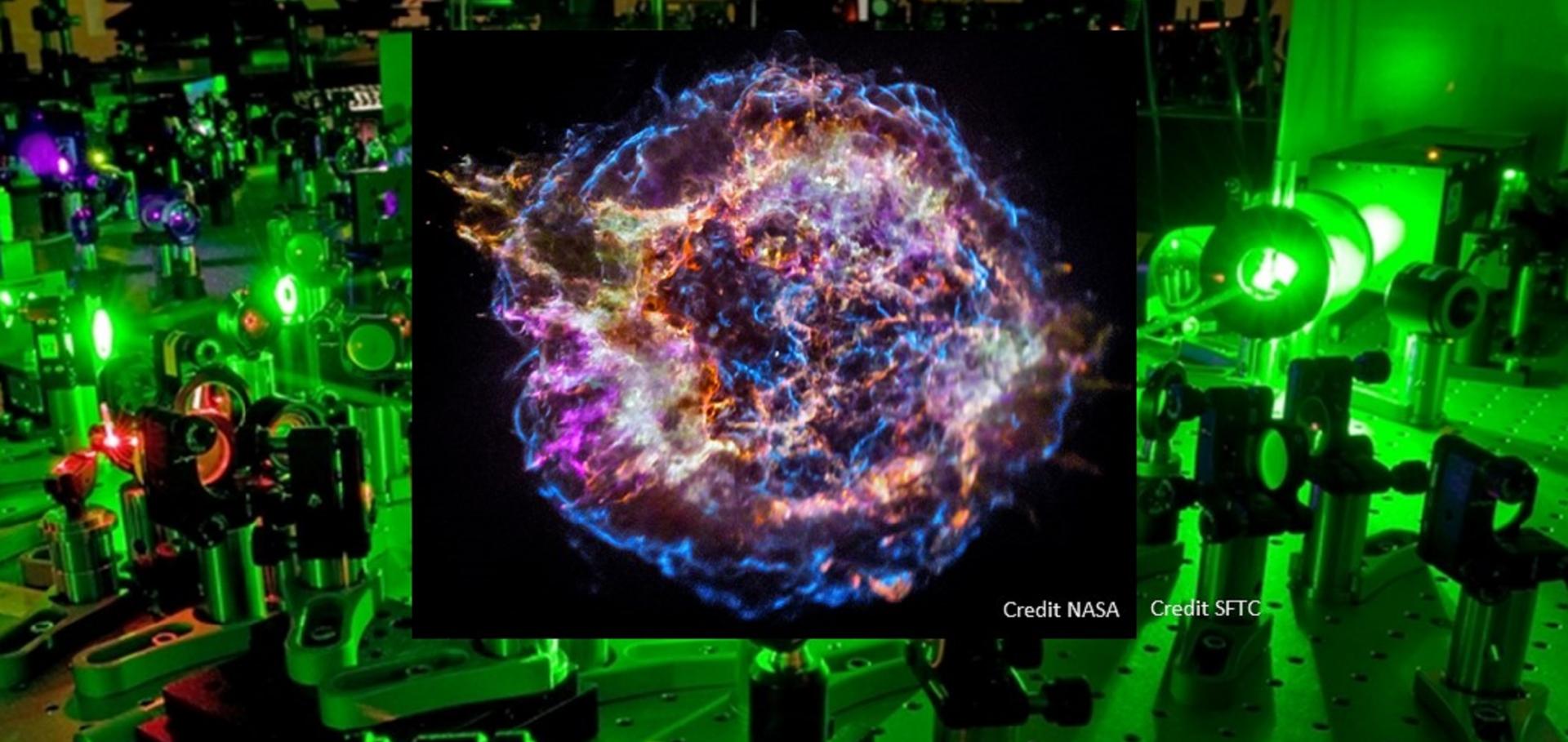Modelling gamma-ray photon emission and pair production in high-intensity laser-matter interactions
Journal of Computational Physics 260 (2014) 273-285
Abstract:
In high-intensity (>1021 Wcm -2) laser-matter interactions gamma-ray photon emission by the electrons can strongly affect the electron's dynamics and copious numbers of electron-positron pairs can be produced by the emitted photons. We show how these processes can be included in simulations by coupling a Monte Carlo algorithm describing the emission to a particle-in-cell code. The Monte Carlo algorithm includes quantum corrections to the photon emission, which we show must be included if the pair production rate is to be correctly determined. The accuracy, convergence and energy conservation properties of the Monte Carlo algorithm are analysed in simple test problems. © 2013 Elsevier Inc.Synchrotron radiation, pair production, and longitudinal electron motion during 10-100 PW laser solid interactions
Physics of Plasmas AIP Publishing 21:3 (2014) 033108
Quantum radiation reaction in laser-electron-beam collisions.
Phys Rev Lett 112:1 (2014) 015001
Abstract:
It is possible using current high-intensity laser facilities to reach the quantum radiation reaction regime for energetic electrons. An experiment using a wakefield accelerator to drive GeV electrons into a counterpropagating laser pulse would demonstrate the increase in the yield of high-energy photons caused by the stochastic nature of quantum synchrotron emission: we show that a beam of 10(9) 1 GeV electrons colliding with a 30 fs laser pulse of intensity 10(22) W cm(-2) will emit 6300 photons with energy greater than 700 MeV, 60× the number predicted by classical theory.From cosmic ray source to the galactic pool
Monthly Notices of the Royal Astronomical Society 437:3 (2014) 2802-2805
Abstract:
The Galactic cosmic ray spectrum is a remarkably straight power law. Our current understanding is that the dominant sources that accelerate cosmic rays up to the knee (3 × 1015 eV) or perhaps even the ankle (3 × 1018 eV), are young Galactic supernova remnants. In theory, however, there are various reasons why the spectrum may be different for different sources, and may not even be a power law if non-linear shock acceleration applies during the most efficient stages of acceleration.We show how the spectrum at the accelerator translates to the spectrum that makes up the escaping cosmic rays that replenish the Galactic pool of cosmic rays. We assume that cosmic ray confinement, and thus escape, is linked to the level of magnetic field amplification, and that the magnetic field is amplified by streaming cosmic rays according to the non-resonant hybrid or resonant instability. When a fixed fraction of the energy is transferred to cosmic rays, it turns out that a source spectrum that is flatter than E-2 will result in an E-2 escape spectrum, whereas a steeper source spectrum will result in an escape spectrum with equal steepening. This alleviates some of the concern that may arise from expected flat or concave cosmic ray spectra associated with non-linear shock modification. © 2013 The Authors Published by Oxford University Press on behalf of the Royal Astronomical Society.Gamma-ray emission in near critical density plasmas
Plasma Physics and Controlled Fusion 55:12 (2013)


